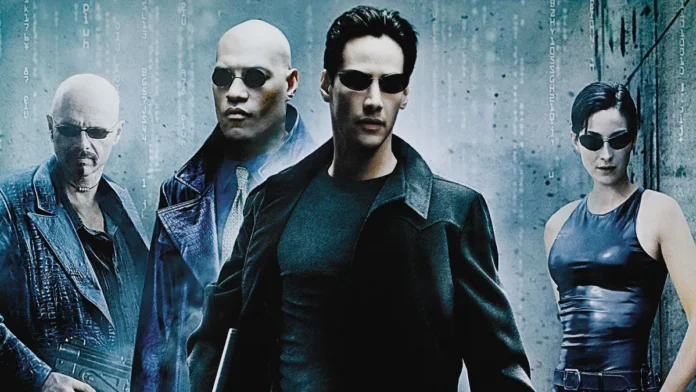The Matrix franchise is owned by Warner Bros. Pictures, a division of Warner Bros. Entertainment, which itself is a subsidiary of Warner Bros. Discovery, Inc. The film rights and production have been under the Warner Bros. banner since the release of the first film in 1999. The franchise includes films, video games, comics, and an animated anthology (The Animatrix), all part of the broader Warner Bros. portfolio.
Revenue:
As of 2021, the total revenue generated by the Matrix film franchise is over $1.6 billion globally. The first three films (The Matrix, The Matrix Reloaded, The Matrix Revolutions) were major box-office successes:
- The Matrix (1999): $466 million
- The Matrix Reloaded (2003): $742 million
- The Matrix Revolutions (2003): $427 million
- The Matrix Resurrections (2021): Grossed approximately $156 million
In addition to box-office earnings, the franchise generates revenue from video game tie-ins, home video sales, merchandise, and licensing deals.
1. Influences on the Film
The Matrix (1999) was heavily inspired by a combination of cyberpunk literature, philosophy, and anime. Influences include the Japanese anime Ghost in the Shell, the philosophical work of Jean Baudrillard (Simulacra and Simulation), and the science fiction novels of William Gibson.
2. The Red Pill and Blue Pill Symbolism
The red pill/blue pill decision is one of the most iconic choices in film history. Taking the red pill symbolizes choosing to learn the often harsh truth of reality, while the blue pill represents remaining in comfortable ignorance. The concept has become a cultural metaphor, influencing political discussions and internet discourse.
3. Groundbreaking Special Effects
The Matrix pioneered “bullet time,” a visual effect where the camera appears to move at regular speed while action (like bullets moving) occurs in slow motion. This technique involved using dozens of cameras to capture the same moment from multiple angles and became a widely used special effect in the years following the film.
4. Keanu Reeves’ Commitment
Keanu Reeves, who played Neo, trained for four months in martial arts and wire-work to perform many of his own stunts. He also worked through a neck injury that required surgery before filming, demonstrating immense dedication to the role.
5. Casting Choices
Several famous actors turned down the role of Neo, including Will Smith, Leonardo DiCaprio, and Brad Pitt. Smith later explained that he didn’t understand the concept of the film at the time and instead opted to star in Wild Wild West.
6. Philosophical Themes
The Matrix is layered with philosophical themes, including questions about the nature of reality, free will, and determinism. The film draws from Descartes’ “Evil Demon” theory, Plato’s Allegory of the Cave, and various Buddhist teachings on the illusion of the material world.
7. Hugo Weaving’s Injury
Hugo Weaving, who played Agent Smith, had to undergo surgery for a hip injury sustained during fight scene rehearsals. His recovery temporarily delayed the production of the film.
8. The Green Tint
Scenes inside the Matrix were filmed with a green tint to emphasize the artificial nature of the simulated world, while scenes set in the real world had a more neutral tone to contrast reality from the virtual environment.
9. Trinity’s Iconic Opening Scene
The opening sequence featuring Carrie-Anne Moss (Trinity) executing acrobatic combat moves was filmed over several days. Moss underwent rigorous training and performed many of the stunts herself, gaining critical acclaim for her portrayal.
10. Innovative Sound Design
The sound design in The Matrix was groundbreaking for its time, with Danetracks (the sound team) using a blend of digital effects and traditional sound engineering to create a unique audio experience. The “bullet-dodging” sounds and mechanical whirring of the Sentinels were particularly notable.
11. Cultural Impact
The Matrix trilogy has had an enormous cultural impact, influencing films, TV shows, video games, and even fashion. The “Matrix look,” including trench coats and sunglasses, became a defining style in early 2000s pop culture.
12. Stunt Double Injuries
During the shooting of the trilogy, many stunt doubles sustained injuries. Chad Stahelski, who was Keanu Reeves’ stunt double, had some of the most dangerous scenes in the sequels and eventually became a successful director himself, directing the John Wick series.
13. Real Hacker Inspiration
Some of the computer commands and “hacking” techniques seen in The Matrix were inspired by real-life hacker culture. The code screens, especially the green rain-like code, have since become iconic in the representation of hacking and cyberspace in media.
14. The Wachowskis’ Transformation
The directors of The Matrix, Lana and Lilly Wachowski, both came out as transgender after the success of the films. Some fans have speculated that the film’s themes of identity and transformation are metaphors for their own personal journeys.
15. Morpheus’ Redesign in Later Films
Laurence Fishburne did not reprise his role as Morpheus in The Matrix Resurrections (2021). Instead, Yahya Abdul-Mateen II portrayed an alternate version of Morpheus, a blend of the character’s consciousness and a new, digital entity.
16. Highest-Grossing R-Rated Film
The Matrix Reloaded (2003) became the highest-grossing R-rated movie at the time of its release, grossing over $742 million worldwide.
17. VR Experiences
The Matrix also inspired various virtual reality (VR) experiences and games. For example, The Matrix Awakens, released as a tech demo in 2021, showcased the power of next-gen gaming consoles using scenes inspired by the original film’s iconic moments.
